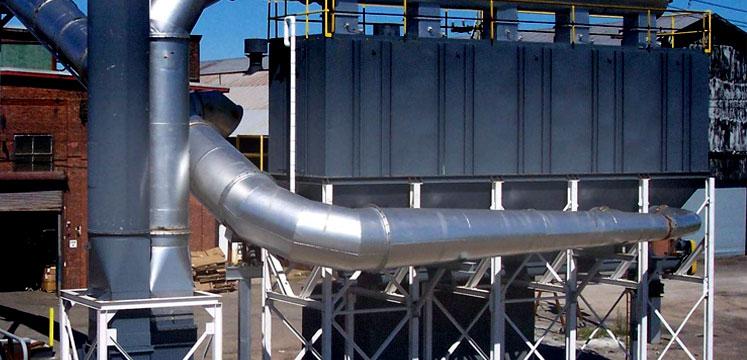Contact Our Team
Please feel free to contact us. We will get back to you within a business day. Or just call us now.
CALL US: +1 (800) 337-1401
EMAIL US: info@precip.com

Industrial Electrostatic Precipitators
Industrial electrostatic precipitators applications are used in the industry to control their particulate matter emissions: fossil fuel-fired boilers, cement plants, steel mills, petroleum refineries, municipal waste incinerators, hazardous waste incinerators, pulp and paper mills, and lead, zinc, and copper smelters. Most widely used for the control of fly ash from industrial and utility boilers, ESPs have been used on coal-fired boilers for more than 50 years. Particulate matter (PM) is a by-product from fossil fuel (coal and oil) burning boilers used to generate steam for industrial processes, and/or to generate electricity.
Both hot-side (ESP upstream of air preheater) and cold-side precipitators are used to control particulate emissions. Cold-Side ESPs are most often used to collect fly ash from coal-fired boilers. If the particulate matter has high resistivity, cold-side units may be used along with a conditioning agent such as sulfur trioxide (SO³). Recogniton that low-sodium coals tend to build resistive ash layers on the collecting plates, thus reducing ESP efficiency, has almost eliminated the sale and use of hot-side units.
A typical precipitator, regardless of its particular design, has these six essential components: discharge electrodes, collection electrodes, high voltage electrical systems, rappers, hoppers, and a shell.
Discharge electrodes are either metal wires that hang vertically in the precipitator, a number of wires attached together in rigid frames, or a rigid electrode made from a single piece of metal. Discharge electrodes create a strong electrical field that ionizes flue gas thus charging the particles within the gas.
Collection electrodes collect the particulate matter that is charged by the discharge electrodes. Collection electrodes are typically flat plates with a charge opposite that of the discharge electrodes.
High voltage equipment creates the electric field between the discharge and collection electrodes used to charge particles within the ESP.
Rappers impart vibrations to the electrodes thus removing the collected particles. Rappers remove particulates from both the discharge and collection electrodes. Occasionally, water sprays are used to remove particles from collection electrodes.
Hoppers are located at the bottom of the precipitator and are used to collect and temporarily store the ash which is removed during the rapping processes.
The shell provides the base which supports the ESP components and encloses the unit.
Ash and Dust Removal
Particulates are removed from the ESP hopper via a discharge device such as a rotary airlock valve. The bulk materials are transported to their final destination for removal or storage via a materials conveying system. The type of industrial conveying systems vary with the type of particulates produced. Drag chain conveyors are often used to transport hygroscopic or sticky particles. Screw conveyors are utilized in the bottom, or trough, of the hopper itself. Pneumatic conveyors are typically designated as either positive or negative pressure depending on whether they employ a compressed air blower (positive) or a vacuum system (negative) to move ash and dust through a tube.